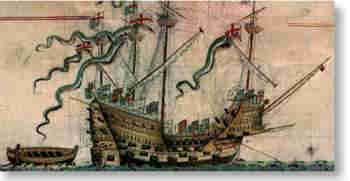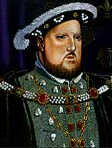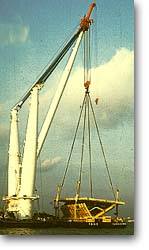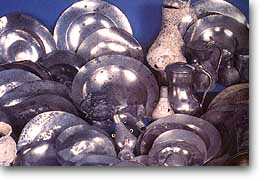
 Mary Rose
Mary Rose

 Built between 1509 and 1511, she was one of the first ships able to fire a broadside, and was favourite of King Henry VIII. After a long and successful career, she sank accidentally during an engagement with the French fleet in 1545. Her rediscovery and raising were important events in the history of nautical archaeology.
Built between 1509 and 1511, she was one of the first ships able to fire a broadside, and was favourite of King Henry VIII. After a long and successful career, she sank accidentally during an engagement with the French fleet in 1545. Her rediscovery and raising were important events in the history of nautical archaeology.
In 1545, the Mary Rose is recorded as having a crew of 200 sailors, 185 soldiers and 30 gunners.
 The remains of around 200 individuals were found on the wreck and these have been studied. They were mostly fit young men, although there were a few boys and men in their forties. The average height of the men on board was five feet seven and a half inches.
The remains of around 200 individuals were found on the wreck and these have been studied. They were mostly fit young men, although there were a few boys and men in their forties. The average height of the men on board was five feet seven and a half inches.
Only the names of three of the crew are known; the Vice-Admiral, Sir George Carew; the Captain, Roger Grenville; and a John Reade.
Conditions for the crew must have been cramped and overcrowded, but they were well paid and looked after. In January 1545, the pay for a mariner was raised from five shillings to six shillings and eight pence a month.
Historical accounts suggest that the diet on ships of the period included salt meat, salt fish and the infamous ship's biscuit: a hard baked mixture of flour and water.
The
Crews of this period were generally well fed, regulations in 1565 stipulated that each sailor receive seven pounds of biscuit, seven gallons of beer, eight pounds of salt beef, three quarters of a pound of stock fish, three eighths of a pound of butter and three fifths of a pound of cheese a week.
 The crew's food was cooked in a "Kychen" in the hold. This structure consisted of four thousand bricks in the form of a firebox supporting two large cauldrons. The fire was fuelled by logs which were stored nearby. Most of the meat and fish would have been boiled in these cauldrons to provide a stew, although a small bronze tripod pot found in the hearth could have been used to prepare individual meals for officers. Smaller pots, a pair of bellows, a hand broom and two ash boxes were also found in this area.
The crew's food was cooked in a "Kychen" in the hold. This structure consisted of four thousand bricks in the form of a firebox supporting two large cauldrons. The fire was fuelled by logs which were stored nearby. Most of the meat and fish would have been boiled in these cauldrons to provide a stew, although a small bronze tripod pot found in the hearth could have been used to prepare individual meals for officers. Smaller pots, a pair of bellows, a hand broom and two ash boxes were also found in this area.
The officers seemed to have eaten from pewter plates and tankards, while the majority of the crew ate and drank from wooden ones.

 Return to the Fridge door
Return to the Fridge door